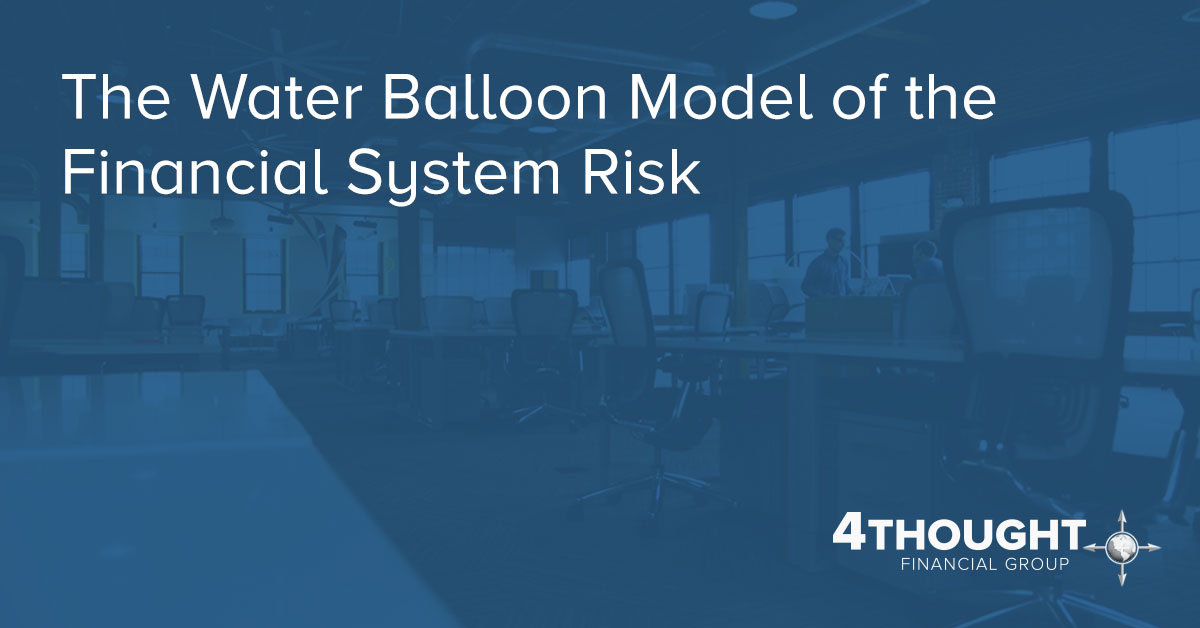
It has been stated by many of the most influential minds in economics that “There is no such thing as a free lunch.” Despite this profound statement, Modern Portfolio Theory (MPT) has been credited by some with identifying the only known “free lunch” in economics.
MPT states that by constructing a strategically-allocated diversified investment portfolio with various assets that exhibit historically low-correlation price movements one can create a portfolio that will perform with the maximum possible return for a given acceptable level of risk (defined as volatility), or reduce the risk for a given target rate of return. This flies in the face of active investment managers who spend countless hours and money on trying to identify the “best” security selection available at any given time and of those that tactically manipulate portfolio components in anticipation of market changes.
The “free lunch” of MPT is that rather than having to make the identification of the “best” security at the time, having to tactically manipulate portfolios, or having to tolerate extreme gyrations in asset value in order to achieve a target return, a diversified portfolio of low-correlation assets can outperform any such single-asset portfolios or market-timed portfolios on a risk adjusted basis over the long term. Thus, by identifying this underlying truth, it has been claimed that MPT has found a way to reduce risk on an absolute basis. The “free lunch” refers to a “free risk reduction.” This was a stunning discovery at the time, and still remains the single most influential principle of investment management. In fact, when put into practice, this absolute reduction in the risk to an individual investor’s portfolio was a reality (and still is).
Let’s take a step back for a moment and consider how extraordinary this discovery really was. Classical economics and investment theory hold that one cannot achieve reward (or returns) without taking on a commensurate amount of risk (volatility according to MPT). This inverse relationship was considered not just a correlatory relationship, but a causal relationship. Taking on a larger amount of risk would provide an exactly proportional amount of return potential, and there was no way to reduce the risk taken to target that return. The “free lunch” of MPT would at first seem to show that this was no longer true. One could achieve a higher return for the same amount of risk.
In fact, this initial assessment was true, but only within the context of the investment mathematics and technology that was available up to that point. However, academics and investors soon realized that they did not previously have the proportional relationship between risk and return calibrated properly for the individual investor portfolio. Up to this point of realization, the risk/return calibration was inexact and was a correlatory relationship, whereas after MPT’s “portfolio efficiency optimization” the risk/return relationship became closer to what could be considered a causal, directly proportional relationship.
The theory of the relationship between risk and reward had been made into a reality through the implementation of investment mathematics technology.
With the progressive application of MPT, we were able to get back to the original tenets of classical economic theory. We could measure the “efficient frontier.” The theory of the relationship between risk and reward had been made into a reality through the implementation of investment mathematics technology. Portfolios were efficient, the markets were efficient, and volatility-based non-systematic risk was minimized. All was right in the world of investment theory.
But this begs the question: What happened to market efficiency and what happened to investor portfolios in 2007-2009? We must consider a rather unnerving possibility for economists and investment managers: Perhaps the markets adapted. The rules of engagement may have changed – profoundly – based on our deep and widespread interaction with the underlying system. Allow for an explanation:
Something was missing from the extraordinary claim of the “free lunch” of Modern Portfolio Theory. The problem with the absolute risk reduction assessment is that the perspective of evaluation is too narrow. If we look at the 30+ years preceding the financial crisis of 2007-2009 and at an individual investor’s diversified MPT-based strategic asset allocation portfolio during that time period, we indeed find that the absolute portfolio volatility risk is measurably reduced when compared with concentrated actively managed portfolios and market-timing based portfolios. However, if we consider a broader perspective that encompasses the entire financial system, rather than looking at the risk/return characteristics of a single investor portfolio, then things are illuminated.
Imagine that the total amount of risk to a single investor’s portfolio were encapsulated in a water balloon held in your hand. Your hand is empowered with Modern Portfolio Theory, which defines the risk contained in the water balloon as portfolio volatility
In order to shrink your portfolio’s volatility while maintaining the same returns potential, you begin squeezing your balloon with your MPT-empowered hand. The portion of the balloon that represents portfolio volatility shrinks (that which is held in your palm and within the constraints of your fingers, but not that which begins bulging out between each of your fingers), and therefore your non-systematic volatility-based risk is reduced. Under normal circumstances, this is the gross effect of modern portfolio theory and strategic asset allocation.
However, in reducing the individual investor portfolio volatility risk in our portfolio we have not made the following consideration: “Where has the risk gone?”
We will now make a drastic assumption. If we assume that the total risk of the entire financial system (not just our individual investor portfolio) is a definite immutable sum that cannot be reduced on an absolute basis, we can come up with some answers to where the risk has gone. Under this assumption, we should consider the possibility that the risk has not been reduced on an absolute basis, but that instead it has been transferred to other risks or to other parties. It has been squeezed out between your fingers into semi-segregated lumps in the balloon.
Some of the new lumps in the squeezed balloon now sticking out between your fingers are risks to your individual investor portfolio. For example:
New Potential Risks to the Individual Investor Portfolio:
* Issuer Credit Risk: Between your index finger and middle finger you may now have a lump that contains issuer credit risk because you have moved a portion of your portfolio into laddered individual bond holdings.
* Due Diligence Risk: Between your middle finger and ring finger you may now have a lump for the risk associated with the inability to closely follow all asset components of the portfolio because there are simply too many of them to understand, and too many to monitor completely, mainly because your portfolio has become so diversified.
* Emotional Risks and Behavioral Risks: Between your ring finger and pinkie, you may now have a small lump containing the risk associated with an inability to “keep up with the Jones’”. They may be 100% in tech stocks during the dotcom boom or 100% in cash during the 2007-2009 crisis, while you are in a more diffuse portfolio with less upside potential or proportionate protection at the particular moment in question. This is but one example of various human emotional and behavioral considerations.
* Individual Investor Systematic Risk Exposure: The large bulge sticking out near the heel of your palm may represent the risk associated with an increased correlation of your portfolio movements with those of the markets as a whole (as opposed to a comparatively lower correlation assuming the use of an individual holding which may or may not move in the same direction or to the same extent as the encompassing market at the same time). As non-systematic risk is decreased, the proportionate systematic risk exposure of the individual investor portfolio is increased.
* Other Risks: The above potential risks are only a smattering of the potentially dozens of new risks that might arise within an individual investor portfolio as a result of MPT use. The same concept must necessarily be applied to the broader financial system, with the majority of such risks still unknown.
As substantial as these new risks may sound, most investors have been happy with accepting them over the last 30+ years because the alternative of excessive portfolio volatility was far less appealing. This shifting of risk during the unquestioned heyday of MPT made more sense for most people. This must be emphasized – it was a shifting or transfer of risk that occurred within the single investor portfolio, but not a reduction/elimination of the risk.
New Potential Risks to the Financial System
But we have not yet considered the bulging pulsating lump squeezed tightly between the forefinger and thumb. It is here that the most unanticipated and largely unaccounted-for risk is located as a result of the squeezing out of individual investor portfolio volatility risk by MPT.
There are unexplained paradoxes of the formerly almost unanimously accepted Efficient Markets Hypothesis (EMH). According to EMH, Market efficiency should exist because of the independent actions of large numbers of active well-informed profit maximizers that seek out opportunities for arbitrage and above-market performance trades, whose constant and speedy incorporation of new information into the price of a security should make it nearly impossible for most investors to capitalize on any existing differentials between market price and the intrinsic value of a security. This is because such opportunities are almost instantaneously eliminated by the market. Varying interpretations of this dynamic exist depending on the accepted form of EMH – Weak, Semi-Strong, or Strong. If EMH held true in practice, those profit maximizers who created profits from trades and kept the market efficient would generally only make minimal profits split between many market participants, and would net out on the trades even or under because of transaction costs. But the ensuing paradox is twofold:
1. If the profit maximizers know that EMH exists and believe that it is true, then why do they spend so much time and effort in continuing to attempt to beat the market? Does this mean that they are not rational actors, as classical economic theory requires? Does it mean that EMH is downright wrong? Maybe it means something else. For example, perhaps investors have bought into an idea (EMH/ MPT) sold to them by the people who make money perpetuating it in the investment management profession.
2. The second, and most important part of the paradox of the Efficient Markets Hypothesis is that if all market participants decide to accept EMH and follow it, through passive or semi-passive MPT-based strategic asset allocation and portfolio diversification, then there will be no active arbitrageurs or traders around to create the market efficiency necessary for EMH to hold true.
It is this latter realization that leads one to the risk transfer that is represented in the bulging lump between the thumb and forefinger in our water balloon model of financial system risk.
Each passive or strategic MPT investor is one less arbitrageur.
As the individual investor squeezes the volatility out of his/her portfolio using Modern Portfolio Theory, he or she shifts/transfers portfolio volatility risk not only to other risks within their own portfolio, but also out into the broader financial system, making the market system as a whole less efficient at pricing securities. Each passive or strategic MPT investor is one less arbitrageur. Strangely and paradoxically, as individual investors acting rationally and efficiently for our own purposes, we are inadvertently making the larger financial system less rational and less efficient.
Therefore, although the claim of the “only free lunch in economics” may be somewhat true within the context of the individual investor’s portfolio, perhaps it is not true if we look at the sum total of all market participants’ portfolios as a whole. Under these assumptions, an immutable and constant proportional intertwinement of risk and reward not unlike Einstein’s observation of the intertwinement of space and time still seems to exist. Individual portfolio volatility risk can be transferred outward through MPT to an increased risk of market inefficiency, seeming irrationalism, and underlying systemic volatility.
Now let us consider what might happen if we have millions of market participants all squeezing their water balloon tightly at the same time in the attempt to optimize their individual investment portfolios. This has certainly occurred amongst mainstream institutional and individual investment portfolios over the last thirty years or more. The use of strategic asset allocation under some form or another has become dominant as a philosophy for investment, along with both passive and actively managed funds that exhibit portfolios constrained to their style boxes and mandates, most with an inability to capture opportunities across asset class and investment style lines. There is also an aversion to market timing amongst overlay portfolio managers (and rightly so under efficient market circumstances).
Under the above scenario, we might see millions of bulges between the thumb and forefinger of each market participant, creating vast pricing inefficiencies in the markets, seemingly irrational price swings, and importantly – extreme volatility in even fully diversified portfolios whose non-systematic risk exposures have been minimized, but whose systematic risk exposures have been proportionately maximized. As a result of investor behaviors and close (or even loose) following of MPT we will have vastly reshaped the rules of engagement for the market. The market will have adapted.
If we look at the last several years, it is reasonable to assume that this squeezing of the balloons may have been a major factor contributing to the wild portfolio value swings we saw in 2007-2009, and possibly an aggravating factor of the credit crisis. We may have simply gotten too good at applying Modern Portfolio Theory and forced the markets towards inefficiency.
The popping of the risk balloons would likely be an entire book topic in itself.
Another consideration is that if one were to squeeze tight enough, he or she might even pop the risk balloon. The popping of the risk balloons might signify the point at which all risk contained by our human invention, the global financial system, is catastrophically transferred over from this virtual world into the more tangible world of real economic human experience – an undesirable situation that we may have largely avoided in the current crisis. The popping of the risk balloons would likely be an entire book topic in itself.
This article should in no way be considered an indictment of Modern Portfolio Theory. In fact, in the author’s view, MPT in one form or another is still the most useful theory of investment available to market participants. That does not mean it is the ultimate tool of investors or that it is infallible. When it comes to application of the water balloon model of financial system risk in the realm of investment management, we might expect revolving market adaptation or evolution between efficiency and inefficiency and back again in the markets.
The description and measurement of such dynamic movements will potentially be a major topic of research in the investment management academic world in the coming years.
As a result of such market adaptations, we may expect to see periods cycling between outperformance of MPT-based methodologies and outperformance of arbitrage, tactical, opportunistic, absolute-return, or other active philosophies. It is also possible that we will find some entirely new dominating paradigms as the structure of the markets continues to adapt and evolve over time in response to human behaviors.







Leave a Comment